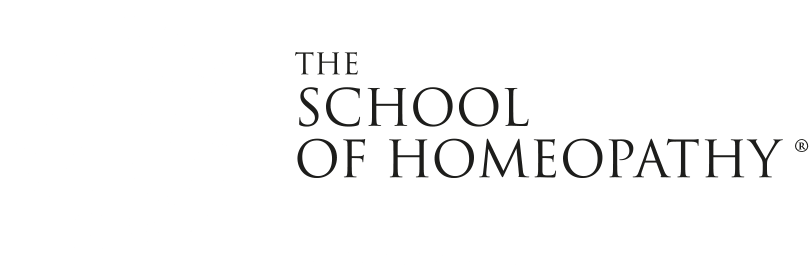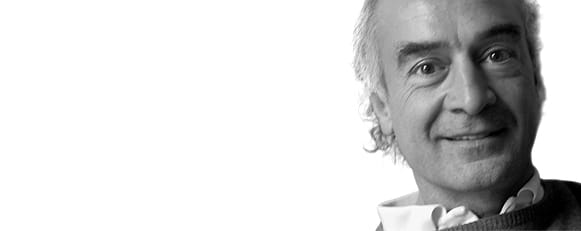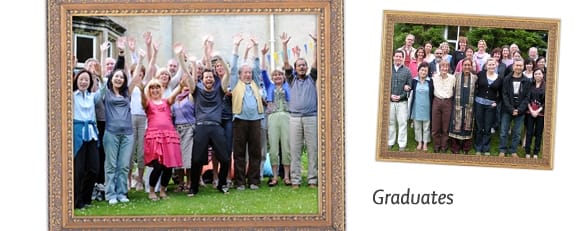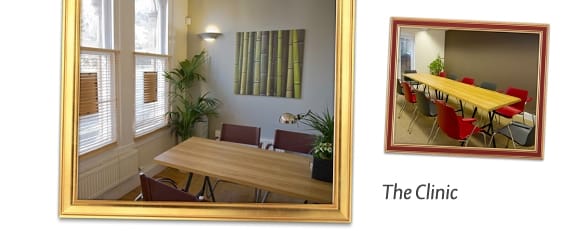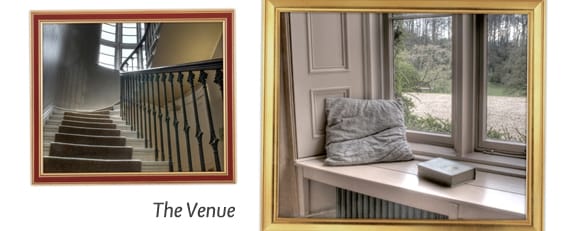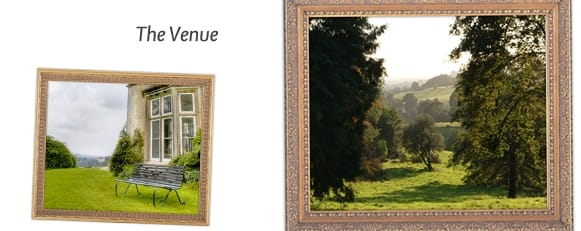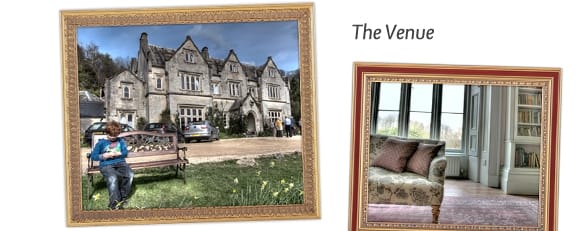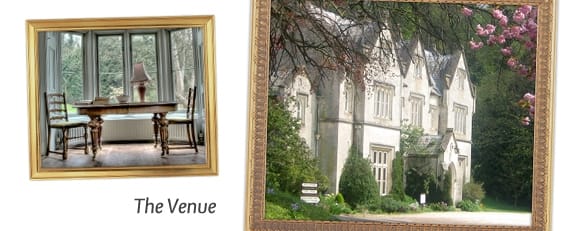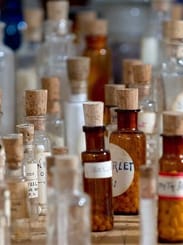
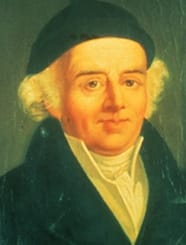
Aphorism 261-270
§ 261
The most appropriate regimen during the employment of medicine in chronic diseases consists in the removal of such obstacles to recovery, and in supplying where necessary the reverse: innocent moral and intellectual recreation, active exercise in the open air in almost all kinds of weather (daily walks, slight manual labor), suitable, nutritious, unmedicinal food and drink, etc.
§ 262
In acute diseases, on the other hand – except in cases of mental alienation – the subtle, unerring internal sense of the awakened life-preserving faculty determines so clearly and precisely, that the physician only requires to counsel the friends and attendants to put no obstacles in the way of this voice of nature by refusing anything the patient urgently desires in the way of food, or by trying to persuade him to partake of anything injurious.
§ 263
The desire of the patient affected by an acute disease with regard to food and drink is certainly chiefly for things that give palliative relief: they are, however, not strictly speaking of a medicinal character, and merely supply a sort of want. The slight hindrances that the gratification of this desire, within moderate bounds, could oppose to the radical removal of the disease1 will be amply counteracted and overcome by the power of the homoeopathically suited medicine and the vital force set free by it, as also by the refreshment that follows from taking what has been so ardently longed for. In like manner, in acute diseases the temperature of the room and the heat or coolness of the bed-coverings must also be arranged entirely in conformity with the patients’ wish. He must be kept free from all over-exertion of mind and exciting emotions.
1 This is, however, rare. Thus, for instance, in pure inflammatory diseases, where aconite is so indispensable, whose action would be destroyed by partaking of vegetable acids, the desire of the patient is almost always for pure cold water only.
§ 264
The true physician must be provided with genuine medicines of unimpaired strength, so that he may be able to rely upon their therapeutic powers; he must be able, himself, to judge of their genuineness.
§ 265 Fifth Edition
It should be a matter of conscience with him to be thoroughly convinced in every case that the patient always takes the right medicine.
§ 265 Sixth Edition
It should be a matter of conscience with him to be thoroughly convinced in every case that the patient always takes the right medicine and therefore he must give the patient the correctly chosen medicine prepared, moreover, by himself.
§ 266
Substances belonging to the animal and vegetable kingdoms possess their medicinal qualities most perfectly in their raw state.1
1 All crude animal and vegetable substances have a greater or less amount of medicinal power, and are capable of altering man’s health, each in its own peculiar way. Those plants and animals used by the most enlightened nations as food have this advantage over all others, that they contain a larger amount of nutritious constituents; and they differ from the others in this that their medicinal powers in their raw state are either not very great in themselves, or are diminished by the culinary processes they are subjected to in cooking for domestic use, by the expression of the pernicious juice (like the cassava root of South America), by fermentation (of the rye-flour in the dough for making bread, sour-crout prepared without vinegar and pickled gherkins), by smoking and by the action of heat (in boiling, stewing, toasting, roasting, baking), whereby the medicinal parts of many of these substances are in part destroyed and dissipated. By the addition of salt (pickling) and vinegar (sauces, salads) animal and vegetable substances certainly lose much of their injurious medicinal qualities, but other disadvantages result from these additions.
But even those plants that possess most medicinal power lose that in part or completely by such processes. By perfect desiccation all the roots of the various kinds of iris, of the horseradish, of the different species or arum and the peonies lose almost all their medicinal virtue. The juice of the most virulent plants often becomes inert, pitch-like mass, from the heat employed in preparing the ordinary extracts. By merely standing a long time, the expressed juice of the most deadly plants becomes quite powerless; even at moderate atmospheric temperature it rapidly takes on the vinous fermentation (and thereby loses much of its medicinal power), and immediately thereafter the acetous and putrid fermentation, whereby it is deprived of all peculiar medicinal properties; the fecula that is then deposited, if well washed, is quite innocuous, like ordinary starch. By the transudation that takes place when a number of green plants are laid one above the other, the greatest part of their medicinal properties is lost.
§ 267
We gain possession of the powers of indigenous plants and of such as may be had in a fresh state in the most complete and certain manner by mixing their freshly expressed juice immediately with equal parts of spirits of wine of a strength sufficient to burn in a lamp. After this has stood a day and a night in a close stoppered bottle and deposited the fibrinous and albuminous matters, the clear superincumbent fluid is then to be decanted off for medicinal use.1 All fermentation of the vegetable juice will be at once checked by the spirits of wine mixed with it and rendered impossible for the future, and the entire medicinal power of the vegetable juice is thus retained (perfect and uninjured) for ever by keeping the preparation in well-corked bottles and excluded from the sun’s light.2
1 Buchholz (Taschenb. f. Scheidek. u. Apoth. a. d. J., 1815, Weimar, Abth. I, vi) assures his readers (and his reviewer in the Leipziger Literaturzeitung, 1816, No. 82, does not contradict him) that for this excellent mode of operating medicines we have to thank the campaign in Russia, whence it was (in 1812) imported into Germany. According to the noble practice of many Germans to be unjust towards their own countrymen, he conceals the fact that this discovery and those directions, which he quotes in my very words from the first edition of the Organon of Rational Medicine, § 230 and note, proceed from me, and that I first published them to the world two years before the Russian campaign (the Organon appeared in 1810). Some folks would rather assign the origin of a discovery to the deserts of Asia than to a German to whom the honor belongs. O tempora! O mores!
Alcohol has certainly been sometimes before this used for mixing with vegetable juices, e.g., to preserve them some time before making extracts of them, but never with the view of administering them in this form.
2 Although equal parts of alcohol and freshly expressed juice are usually the most suitable proportion for affecting the deposition of the fibrinous and albuminous matters, yet for plants that contain much thick mucus (e.g. Symphytum officinale, Viola tricolor, etc.), or an excess of albumen (e.g., Aethusa cynapium, Solanum nigrum, etc.), a double proportion of alcohol is generally required for this object. Plants that are very deficient in juice, as Oleander, Buxus, Taxus, Ledum, Sabina, etc., must first be pounded up alone into a moist, fine mass and the stirred up with a double quantity of alcohol, in order that the juice may combine with it, and being thus extracted by the alcohol, may be pressed out; these latter may also when dried be brought with milk-sugar to the millionfold trituration, and then be further diluted and potentized (v. § 271)
§ 268
The other exotic plants, barks, seeds and roots that cannot be obtained in the fresh state the sensible practitioner will never take in the pulverized form on trust, but will first convince himself of their genuineness in their crude, entire state before making any employment of them.1
1 In order to preserve them in the form of powder, a precaution is requisite that has hitherto been usually neglected by druggists, and hence powders, even of well-dried animal and vegetable substances could not be preserved uninjured even in well-corked bottles. The entire crude vegetable substances, though perfectly dry, yet contain, as an indispensable condition of the cohesion of their texture, a certain quantity of moisture, which dose not indeed prevent the unpulverized drug from remaining in as dry a state as is requisite to preserve it from corruption, but which is quite too much for the finely pulverized state. The animal or vegetable substance which in its entire state was perfectly dry, furnishes, therefore, when finely pulverized, a somewhat moist powder, which without rapidly becoming spoilt and mouldy, can yet not be preserved in corked bottles if not previously freed from this superfluous moisture. This is the best effected by spreading out the powder in a flat tin saucer with a raised edge, which floats in a vessel full of boiling water (i.e. a water-bath), and, by means of stirring it about, drying it to such a degree that all the small atoms of it (no longer stick together in lumps, but) like dry, fine sand, are easily separated from each other, and are readily converted into dust. In this dry state the fine powders may be kept forever uninjured in well-corked and sealed bottles, in all their original complete medicinal power, without ever being injured by mites or mould; and they are best preserved when the bottles are kept protected from the daylight (in covered boxes, chests, cases). If not shut up in air-tight vessels, and not preserved from the access of the light of the sun and day, all animal and vegetable substances in time gradually lose their medicinal power more and more, even in the entire state, but still more in the form of powder.
§ 269 Fifth Edition
The homoeopathic system of medicine develops for its use, to a hitherto unheard-of degree, the spirit-like medicinal powers of the crude substances by means of a process peculiar to it and which has hitherto never been tried, whereby only they all become penetratingly efficacious1 and remedial, even those that in the crude state give no evidence of the slightest medicinal power on the human body.
§ 269 Sixth Edition
The homoeopathic system of medicine develops for its special use, to a hitherto unheard-of degree, the inner medicinal powers of the crude substances by means of a process peculiar to it and which has hitherto never been tried, whereby only they all become immeasurably and penetratingly efficacious1 and remedial, even those that in the crude state give no evidence of the slightest medicinal power on the human body.
This remarkable change in the qualities of natural bodies develops the latent, hitherto unperceived, as if slumbering2 hidden, dynamic (§ 11) powers which influence the life principle, change the well-being of animal life.3 This is effected by mechanical action upon their smallest particles by means of rubbing and shaking and through the addition of an indifferent substance, dry of fluid, are separated from each other. This process is called dynamizing, potentizing (development of medicinal power) and the products are dynamizations4 or potencies in different degrees.
1 Long before this discovery of mine, experience had taught several changes which could be brought about in different natural substances by means of friction, for instance, warmth, heat, fire, development of odor in odorless bodies, magnetization of steel, and so forth. But all these properties produced by friction were related only to physical and inanimate things, whereas it is a law of nature according to which physiological and pathogenic changes take place in the body’s condition by means of forces capable of changing the crude material of drugs, even in such as had never shown any medicinal properties. This is brought about by trituration and succussion, but under the condition of employing an indifferent vehicle in certain proportions. this wonderful physical and especially physiological and pathogenic law of nature had not been discovered before my time. No wonder then, that the present students of nature and physicians (so for unknowing) cannot have faith in the magical curative powers of the minute doses of medicines prepared according to homoeopathic rules (dynamized).
2 The same thing is seen in a bar of iron and steel where a slumbering trace of latent magnetic force cannot but be recognized in their interior. Both, after their completion by means of the forge stand upright, repulse the north pole of a magnetic needle with the lower end and attract the south pole, while the upper end shows itself as the south pole of the magnetic needle. But this is only a latent force; not even the finest iron particles can be drawn magnetically or held on either end of such a bar.
Only after this bar of steel is dynamized, rubbing it with a dull file in one direction, will it become a true active powerful magnet, one able to attract iron and steel to itself and impart to another bar of steel by mere contact and even some distance away, magnetic power and this in a higher degree the more it has been rubbed. In the same way will triturating a medicinal substance and shaking of its solution (dynamization, potentation) develop the medicinal powers hidden within and manifest them more and more or if one may say so, spiritualizes the material substance itself.
3 On this account it refers to the increase and stronger development of their power to cause changes in the health of animals and men if these natural substances in this improved state, are brought very near to the living sensitive fibre or come in contact with it (by means of intake or olfaction). Just as a magnetic bar especially if its magnetic force is increased (dynamized) can show magnetic power only in a needle of steel whose pole is near or touches it. The steel itself remains unchanged in the remaining chemical and physical properties and can bring about no changes in other metals (for instance, in brass), just as little as dynamized medicines can have any action upon lifeless things.
4 We hear daily how homoeopathic medicinal potencies are called mere dilutions, when they are the very opposite, i.e., a true opening up of the natural substances bringing to light and revealing the hidden specific medicinal powers contained within and brought forth by rubbing and shaking. The aid of a chosen, unmedicinal medium of attenuation is but a secondary condition.
Simple dilution, for instance, the solution of a grain of salt will become water, the grain of salt will disappear in the dilution with much water and will never develop into medicinal salt which by means of our well prepared dynamization, is raised to most marvellous power.
§ 270 Fifth Edition
Thus two drops of the fresh vegetable juice mingled with equal parts of alcohol are diluted with ninety-eight drops of alcohol and potentized by means of two succussions, whereby the first development of power is formed and this process is repeated through twenty-nine more phials, each of which is filled three-quarters full with ninety-nine drops of alcohol, and each succeeding phial is to be provided with one drop from the preceding phial (which has already been shaken twice) and is in its turn twice shaken,1 and in the same manner at last the thirtieth development of power (potentized decillionth dilution X) which is the one most generally used.
1 In order to maintain a fixed and measured standard for developing the power of liquid medicines, multiplied experience and careful observation have led me to adopt two succussions for each phial, in preference to the greater number formerly employed (by which the medicines were too highly potentized). There are, however, homoeopathists who carry about with them on their visits to patients homoeopathic medicines in the fluid state, and who yet assert that they do not become more highly potentized in the course of time, but they thereby show their want of ability to observe correctly. I discovered a grain of soda in half an once of water mixed with alcohol in a phial, which was thereby filled two-thirds full, and shook this solution continuously for half an hour, and this fluid was in potency and energy equal to the thirtieth development of power.
§ 270 Sixth Edition
In order to best obtain this development of power, a small part of the substance to be dynamized, say one grain, is triturated for three hours with three times one hundred grains sugar of milk according to the method described below1 up to the one-millionth part in powder form. For reasons given below (b) one grain of this powder is dissolved in 500 drops of a mixture of one part of alcohol and four parts of distilled water, of which one drop is put in a vial. To this are added 100 drops of pure alcohol2 and given one hundred strong succussions with the hand against a hard but elastic body.3 This is the medicine in the first degree of dynamization with which small sugar globules4 may then be moistened5 and quickly spread on blotting paper to dry and kept in a well-corked vial with the sign of (I) degree of potency. Only one6 globule of this is taken for further dynamization, put in a second new vial (with a drop a water in order to dissolve it) and then with 100 powerful succussions.
With this alcoholic medicinal fluid globules are again moistened, spread upon blotting paper and dried quickly, put into a well-stoppered vial and protected from heat and sun light and given the sign (II) of the second potency. And in this way the process is continued until the twenty-ninth is reached. Then with 100 drops of alcohol by means of 100 succussions, an alcoholic medicinal fluid is formed with which the thirtieth dynamization degree is given to properly moistened and dried sugar globules.
By means of this manipulation of crude drugs are produced preparations which only in this way reach the full capacity to forcibly influence the suffering parts of the sick organism. In this way, by means of similar artificial morbid affection, the influence of the natural disease on the life principle present within is neutralized. By means of this mechanical procedure, provided it is carried out regularly according to the above teaching, a change is effected in the given drug, which in its crude state shows itself only as material, at times as unmedicinal material but by means of such higher and higher dynamization, it is changed and subtlized at last into spirit-like7 medicinal power, which, indeed, in itself does not fall within our senses but for which the medicinally prepared globule, dry, but more so when dissolved in water, becomes the carrier, and in this condition, manifests the healing power of this invisible force in the sick body.
1 One-third of one hundred grains sugar of milk is put in a glazed porcelain mortar, the bottom dulled previously by rubbing it with fine, moist sand. Upon this powder is put one grain of the powdered drug to be triturated (one drop of quicksilver, petroleum, etc.). The sugar of milk used for dynamization must be of that special pure quality that is crystallized on strings and comes to us in the shape of long bars. For a moment the medicines and powder are mixed with a porcelain spatula and triturated rather strongly, six to seven minutes, with the pestle rubbed dull, then the mass is scraped from the bottom of the mortar and from the pestle for three to four minutes, in order to make it homogeneous. This is followed by triturating it in the same way 6 – 7 minutes without adding anything more and again scraping 3 – 4 minutes from what adhered to the mortar and pestle. The second third of the sugar of milk is now added, mixed with the spatula and again triturated 6 – 7 minutes, followed by the scraping for 3 – 4 minutes and trituration without further addition for 6 – 7 minutes. The last third of sugar of milk is then added, mixed with the spatula and triturated as before 6 -7 minutes with most careful scraping together. The powder thus prepared is put in a vial, well corked, protected from direct sunlight to which the name of the substance and the designation of the first product marked /100 is given. In order to raise this product to /10000, one grain of the powdered /100 is mixed with the third part of 100 grains of powdered sugar of milk and then proceed as before, but every third must be carefully triturated twice thoroughly each time for 6 -7 minutes and scraped together 3 -4 minutes before the second and last third of sugar of milk is added. After each third, the same procedure is taken. When all is finished, the powder is put in a well corked vial and labelled /10000, i.e., (I), each grain containing 1/1,000,000 the original substance. Accordingly, such a trituration of the three degrees requires six times six to seven minutes for triturating and six times 3 -4 minutes for scraping, thus one hour for every degree. After one hour such trituration of the first degree, each grain will contain 1/000; of the second 1/10,000; and in the third 1/1,000,000 of the drug used.* Mortar and spatula must be cleaned well before they are used for another medicine. Washed first with warm water and dried, both mortar and pestle, as well as spatula are then put in a kettle of boiling water for half an hour. precaution might be used to such an extent as to put these utensils on a coal fire exposed to a glowing heat.
* These are the three degrees of the dry powder trituration, which if carried out correctly, will effect a good beginning for the dynamization of the medicinal substance.
2 The vial used for potentizing is filled two-thirds full.
3 Perhaps on a leather bound book.
4 They are prepared under supervision by the confectioner from starch and sugar and the small globules freed from fine dusty parts by passing them through a sieve. Then they are put through a strainer that will permit only 100 to pass through weighing one grain, the most serviceable size for the needs of a homoeopathic physician.
5 A small cylindrical vessel shaped like a thimble, made of glass, porcelain or silver, with a small opening at the bottom in which the globules are put to be medicated. They are moistened with some of the dynamized medicinal alcohol, stirred and poured out on blotting paper, in order to dry them quickly.
6 According to first directions, one drop of the liquid of a lower potency was to be taken to 100 drops of alcohol for higher potentiation. This proportion of the medicine of attenuation to the medicine that is to be dynamized (100:1) was found altogether too limited to develop thoroughly and to a high degree the power of the medicine by means of a number of such succussions without specially using great force of which wearisome experiments have convinced me.
But if only one such globule be taken, of which 100 weigh one grain, and dynamize it with 100 drops of alcohol, the proportion of 1 to 50,000 and even greater will be had, for 500 such globules can hardly absorb one drop, for their saturation. With this disproportionate higher ratio between medicine and diluting medium many successive strokes of the vial filled two-thirds with alcohol can produce a much greater development of power. But with so small a diluting medium as 100 to 1 of the medicine, if many succussions by means of a powerful machine are forced into it, medicines are then developed which, especially in the higher degrees of dynamization, act almost immediately, but with furious, even dangerous violence, especially in weakly patients, without having a lasting, mild reaction of the vital principle. But the method described by me, on the contrary, produces medicines of highest development of power and mildest action, which, however, if well chosen, touches all suffering parts curatively.* In acute fevers, the small doses of the lowest dynamization degrees of these thus perfected medicinal preparations, even of medicines of long continued action (for instance, belladonna) may be repeated in short intervals. In the treatment of chronic diseases, it is best to begin with the lowest degrees of dynamization and when necessary advance to higher, even more powerful but mildly acting degrees.
* In very rare cases, notwithstanding almost full recovery of health and with good vital strength, an old annoying local trouble continuing undisturbed it is wholly permitted and even indispensably necessary, to administer in increasing doses the homoeopathic remedy that has proved itself efficacious but potenized to a very high degree by means of many succussions by hand. Such a local disease will often then disappear in a wonderful way.
7 This assertion will not appear improbable, if one considers that by means of this method of dynamization (the preparations thus produced, I have found after many laborious experiments and counter-experiments, to be the most powerful and at the same time mildest in action, i.e., as the most perfected) the material part of the medicine is lessened with each degree of dynamization 50,000 times yet incredibly increased in power, so that the further dynamization of 125 and 18 ciphers reaches only the third degree of dynamization. The thirtieth thus progressively prepared would give a fraction almost impossible to be expressed in numbers. It becomes uncommonly evident that the material part by means of such dynamization (development of its true, inner medicinal essence) will ultimately dissolve into its individual spirit-like, (conceptual) essence. In its crude state therefore, it may be considered to consist really only of this underdeveloped conceptual essence.
I have now, after eighteen months of work, finished the sixth edition of my Organon, the most nearly perfect of all.
Samuel Hahnemann
